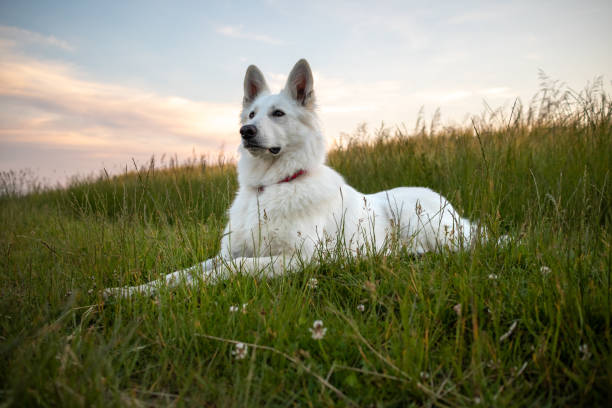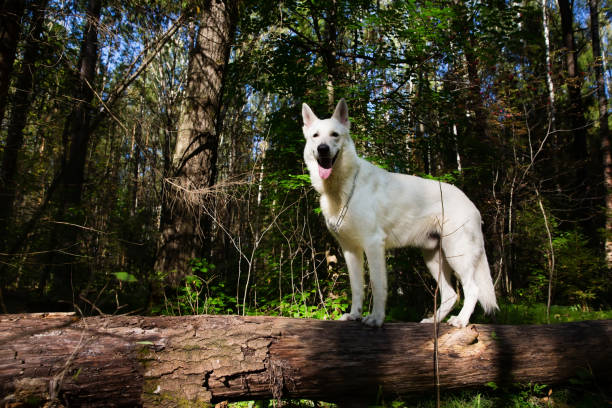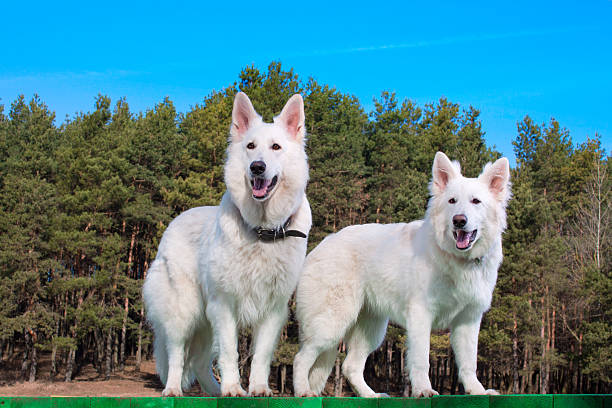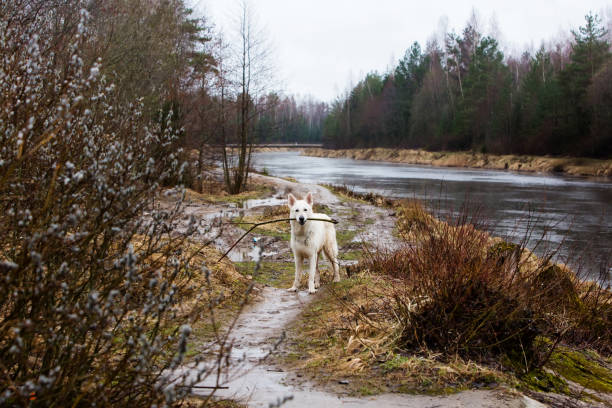White Swiss Shepherd

Breed History:
The White Swiss Shepherd, also known as the Berger Blanc Suisse, is a descendant of white-coated German Shepherds. Although early German Shepherds included white-coated dogs, white was disqualified from the German breed standard in the mid-20th century. However, in North America, the white variety continued to be bred and preserved, eventually forming the basis for the White Swiss Shepherd.
The breed was introduced to Switzerland in the 1970s, where it was selectively developed with a focus on temperament, appearance, and health. It gained recognition as a separate breed by the Fédération Cynologique Internationale (FCI) in 2011 under the name Berger Blanc Suisse. While closely related to the White Shepherd, the White Swiss Shepherd has its own distinct standard, emphasising a softer temperament and wolf-like appearance.
Considering adopting a German Shepherd or any of its variants? Check out our page "How to look after a German Shepherd" detailing what to consider before adopting and our recommended products for a GSD and its variants.
|
Gender |
Height |
Weight |
|
Male |
60-66 cm |
30-40 kg |
|
Female |
55-61 cm |
25-35 kg |
Size – Medium-Large
Life Expectancy: 12–14 years

Breed Appearance:
The White Swiss Shepherd is a graceful and well-proportioned dog, known for its striking white coat, erect ears, and intelligent expression. It has a long, wedge-shaped head, dark almond-shaped eyes, and a bushy tail carried in a gentle curve.
The coat is pure white, with two recognised types: medium-length straight coat and long, plush coat. Its overall appearance is wolf-like, elegant, and expressive. The breed is slightly softer and more refined in build compared to the German Shepherd.
Breed Type – Companion/Working/Family:
The White Swiss Shepherd is a gentle, loyal, and affectionate dog bred to be an ideal family companion and versatile working partner. While it retains the alertness and intelligence of its shepherd ancestry, it is known for a calmer, more sensitive demeanour than the traditional German Shepherd.
This breed bonds deeply with its family and is particularly good with children and other pets when well-socialised. It is often used in therapy and assistance roles, thanks to its empathetic and stable temperament.

Training:
The White Swiss Shepherd is intelligent, obedient, and eager to please, making it highly trainable. It excels in obedience, agility, herding, and canine-assisted therapy work. However, it can also be sensitive and may shut down under harsh or punitive training methods.
Positive reinforcement, consistency, and early socialisation are essential. This breed thrives when mentally challenged and engaged in daily structured activities.
Health & Care:
The White Swiss Shepherd is generally a healthy and resilient breed, though it may be prone to some inherited conditions.
-
Hip and elbow dysplasia
-
Degenerative myelopathy
-
Allergies or sensitive skin
-
Exocrine pancreatic insufficiency (EPI)
Responsible breeding programs emphasise health screening. A balanced diet, joint supplements, and regular veterinary checkups help ensure a long, active life.

Living Conditions:
The White Swiss Shepherd is adaptable and can thrive in rural or suburban homes, or in apartments with sufficient exercise. However, it needs regular interaction, engagement, and closeness with its humans.
It is not a breed that does well in isolation. Without adequate companionship or stimulation, it may develop separation anxiety, destructive behaviours, or become withdrawn.
Exercise:
This breed has moderate to high energy levels and requires at least 1–1.5 hours of daily exercise. It enjoys walks, hikes, play sessions, and mental enrichment through training or puzzle toys.
The White Swiss Shepherd thrives in structured activities, such as obedience, agility, nose work, or therapy work. Without sufficient physical and mental stimulation, it may become bored or anxious.
Grooming:
The White Swiss Shepherd has a dense double coat that sheds moderately year-round and heavily during spring and fall. Brushing 2–3 times per week is usually enough, but more frequent grooming may be needed during seasonal shedding.
The white coat stays relatively clean and does not trap odours easily. Bathing should be occasional, and routine nail trimming, ear cleaning, and dental hygiene should be maintained.

Advantages:
-
Calm, gentle, and affectionate with family
-
Highly trainable and intelligent
-
Stunning white appearance with a soft expression
-
Excellent with children and other pets when socialised
-
Versatile in work—great for therapy, obedience, and companionship
-
Less intense and reactive than working-line GSDs
Disadvantages:
-
Sensitive to harsh training or loud environments
-
Requires regular exercise and mental engagement
-
Prone to separation anxiety if left alone too long
-
Moderate to heavy shedding
-
Needs consistent grooming and coat care
-
Still at risk for inherited joint or neurological conditions

